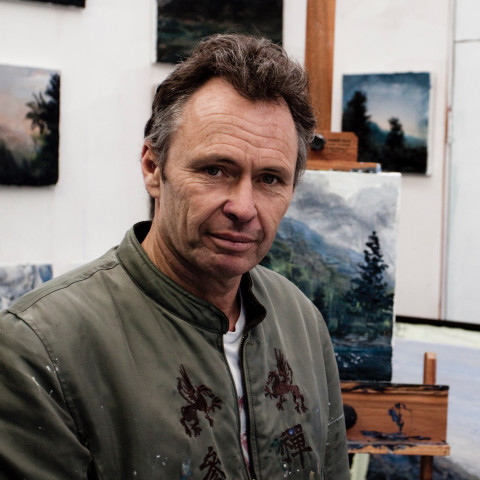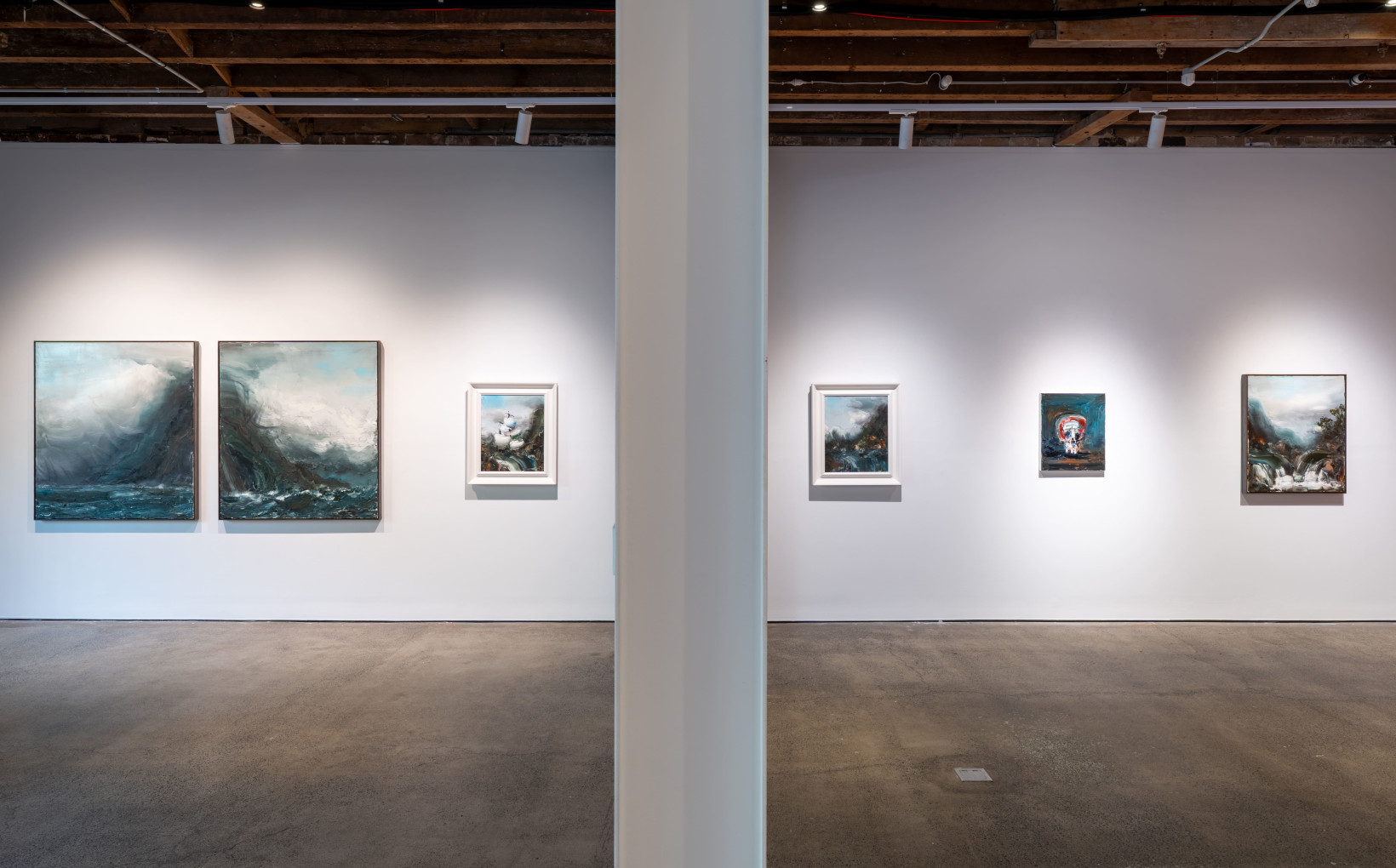
1964, Auckland
Lives and works in Thirroul, NSW

Paul Ryan is an enigmatic figure in Australian art, synonymous with the coastal landscape south of Sydney. Where cool mountain air collides with the salt infused southern winds, an atmospheric shroud blankets the place. There is a primeval feel to the landscape. Mega flora—giant red flowers, alongside indigenous and introduced species—populate the escarpment, reflecting the history of its human habitation. It is moody and mysterious. In the hinterland, creeks cascade over rocky ledges. The water falling to the shoreline meets the continuous motion of crashing waves that scour the jagged rocks. It is the very essence of the sublime. This is Paul Ryan’s lifelong home.
I sometimes wonder if it is possible for people to become the landscape. Storms can come from blue skies, life from ash. Often, beauty can give way to an aesthetic storm. Paul Ryan balances on this precipice. A gifted painter, he creates a palpable eeriness by capturing the landscape as his muse. Ryan—whose swathes of oil paint have the ability to convey everything that the landscape is in a formalist sense—continues to maintain a somewhat calamitous streak that has him perched on the metaphorical edge, challenging the viewer to find comfort in his image.
It is this investigation of the landscape and his own psyche that is at the heart of “Where the Water Falls”. The artist observes that the intensity with which man endeavours to conquer, contain, or harness the land has the very real potential to descend one into the mire of melancholy, or even madness. The writing of Joseph Conrad, re-imagined over the hundred years since the publication of Heart of Darkness, explores madness born of Imperial ambition. It is a rich, thematic reef that the artist has mined for many years. His investigations have challenged and broadened the ongoing conversation that our country is still undertaking.
In this exhibition, Ryan has brought the ship—a vehicle of colonisation—from the ocean into the land; a space both strange and abstracted. The landscape of his home has morphed into an almost mythical place. In doing so, he acknowledges the debt owed to the Dutch landscape artist, Jacob Van Ruisdael—a conversation across the centuries.
The artist is further inspired by the 1982 film, Fitzcarraldo. In it, opera pervades the jungle, played from a gramophone on the top deck of a steamboat as it moves along the mighty Amazon River. It is an act of cultural colonisation that extends beyond the traditional inhabitants of the Amazonian basin. As the ship is portaged over mountain passes, only to be destroyed by a rock at the base of a waterfall, we are confronted by the age-old conundrum of man versus nature. No matter the genius of our mechanical ingenuity, nor our pursuit for personal success, we are still held accountable by Mother Earth—invariably leaving a mark on the very soul of our psyche. Ryan reminds us that circumstance, and mistreatment, is never far away.
Ralph Hobbs
May 2025
Your monthly art news on the run plus invitations to Nanda\Hobbs exhibitions and events